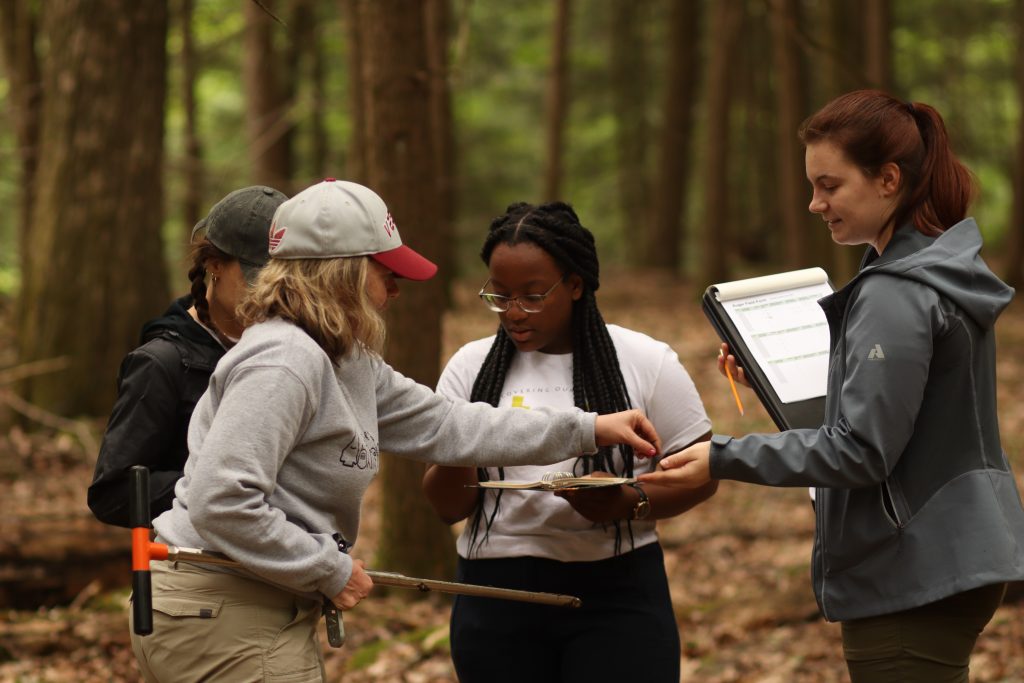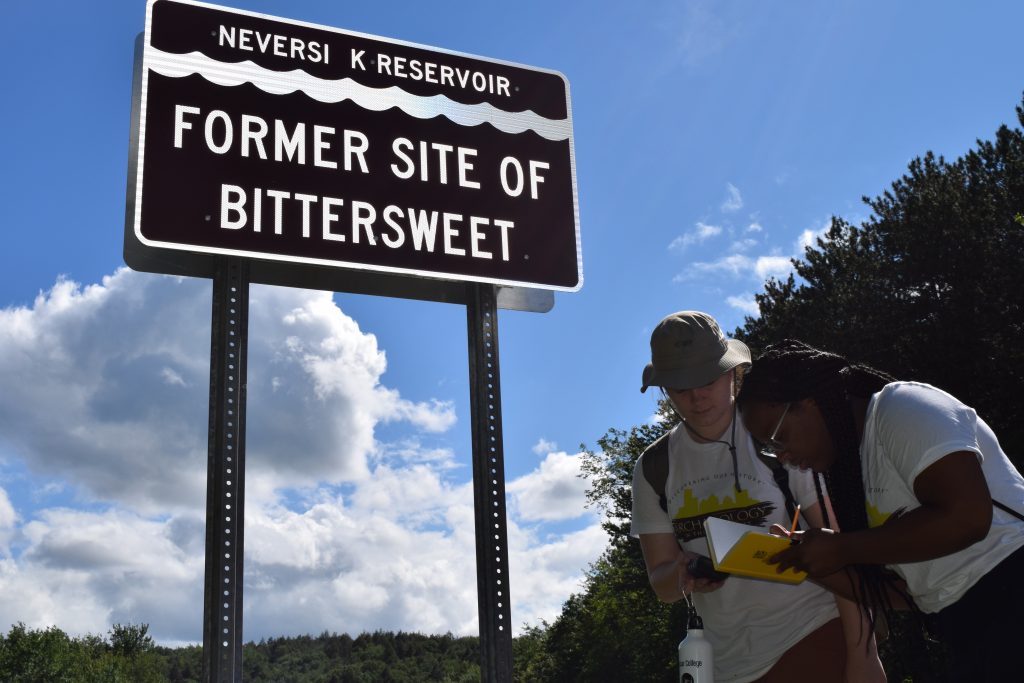This summer we worked with Professor April Beisaw on the community heritage and archaeology project that researched the histories of towns that were impacted by the New York City water system. Additionally, we responded to community requests for archaeological expertise and helped organizations such as Marist College and the Ashokan Center with surveys and excavations.
The majority of the project was spent doing a combination of archaeological surveys with community members and lab work to decenter New York City as the central part behind the history of the NYC water system.
The NYC water system is a complex system of watersheds, reservoirs, and aqueducts that bring water from rural populations in the Catskills/Delaware Watershed and Croton Watershed to city populations through the use of gravity alone. Although some claim this is a marvel of modern engineering, what is not told is the displacement of communities in order to create this system. However, evidence of this destruction can be seen by the building foundations that are scattered across the lands surrounding the reservoirs.
Through community hikes of the Neversink, Rondout, and Ashokan reservoirs, we attempted to use ruins as stepping stones that could spur stories of the region from locals. The most important aspect of this project came in the lab as we combined GPS data, historical research, and oral histories to create interactive websites (StoryMaps) that shared our research back with the community. Our experience with this project emphasized the importance of including the public in academic research. Not only would we not have known much of the information we learned without them, but by documenting their stories we were able to help center their local knowledge and reveal the history of struggle and perseverance that happened as a result of the displacement of their communities.


